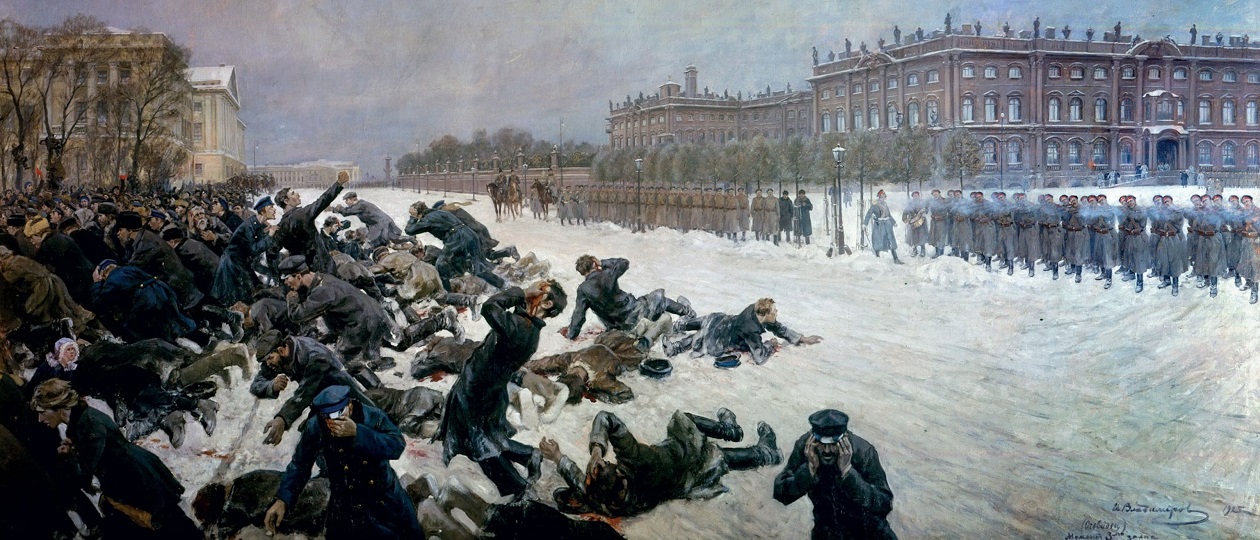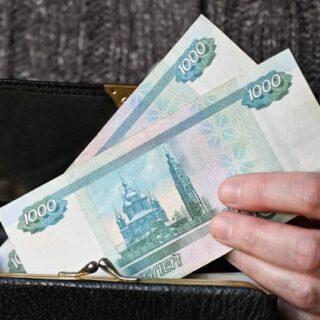
Support from liberals and moderate socialists and ambivalent attitudes by conservatives enabled the massiveness and continuity of left-wing terrorism in Russia between 1901-1911.
In its fight against terrorism and revolutionary violence, the government found few supporters. What happened was the mass criminalization of Russian educated society.
The relevance of the liberal and conservative attitudes toward terrorism for today cannot be over-emphasized. If governments cannot receive the support of society, especially from political parties and movements, they cannot win a war against terrorism.
The tsarist government bears a high degree of responsibility for failing to win the support of society in its fight against terrorism. Despite the attempts of popular publications in Russia today to idealize Tsar Nicholas II and to portray him as a martyr, the record shows that Nicholas II created virtually ideal conditions for massive and continual terrorism.
Some Necessary Explanation
As noted in previous articles, terrorism was a derivative and reflection of the hostile and strained relationships between the government and society. In the Russian context, society [общество] always refers to educated society. Within society was the intelligentsia—the politically conscious sector of society and the leader of political parties and movements. Today these social strata would be described as political classes.
Traditionally, historians have followed the lead of pre-1917 political activists and restricted membership in society and the intelligentsia to liberals and socialists. Society expressed its views through public opinion [общественность] and this term was generally understood as referring to liberal or socialist opinion in opposition to the government.
Liberal and socialist movements formed the leadership of the movement of society [общественное движение]. The term could be used in a broader sense to include student and youth movements, women’s movements, and movements of the non-Russian minorities, peasants, and workers since these movements were generally liberal or socialist. However, the term generally excluded reactionary and conservative movements even if these movements opposed the government. The term movement of society was actually a coded term for liberation movement [освободительное движение].
However, opposition to the government spanned the entire political spectrum and one cannot ignore the views of reactionaries and conservatives. In fact, the right-wing camp was also the target of government suspicion.
Government, Society, and the People
Peasants, workers, and other members of the lower classes made up the people [народ]. Members of government and society had distorted attitudes about the common people. Socialists often saw the common people as inherently socialist and revolutionary. Conservatives and reactionaries often hailed them for their devotion to the tsar and Russian Orthodox Church. Nicholas II and others emphasized the loyalty of the peasants in contrast to the political unreliability of society. However, peasant monarchism was misinterpreted by the tsar and many others. The monarchism of the lower classes, like elsewhere in Europe, was expressed in a longing for a Father Tsar who would punish the wicked nobles and officials responsible for the suffering of the common people. Furthermore, the Father Tsar was a remote figure who generally let the peasants in total freedom in their local communities. One can call this view <<monarchist anarchism>>. This type of monarchism could not serve as a base of support for the autocracy.
The hostility between the government and society expressed itself in different ways and had horrific long-term consequences.
Government Responsibility for Terrorism
The hostile relationship between the autocratic (tsarist-absolutist) government and educated society had a long history. Much of the problem stemmed from the very nature of the Russian autocracy.
Russian tsars, in distinction from European rulers, did not have a proper understanding about the state as a distinct organism, separate from their persons. The Russian language has similar words for state [государство, state] and ruler [годсударь, gosudar’]. Few tsars could understand the distinction. Emperors considered the Russian state their private domain or fiefdom. Although Peter I considered himself the first servant of the state, this type of self-identification was simply alien to most tsars. Nicholas II, more than most other tsars, embodied this private domain mentality. He firmly believed that he had received his power from God and only God could take this power away from him. Nicholas believed that he had signed the Manifesto of October 17, 1905, granting political freedom and a State Duma, under stress and that he was free to limit or abolish the manifesto and the Basic Laws of 1906 establishing the relationship between the government and the Duma. [1, c.419]
Mistrust of any public initiative, even from the most loyalist elements, was a key feature of the government’s attitude to its population. Unlike European governments, the Russian government did not strive to develop a sense of civic consciousness. This happened in a time when many European governments mobilized all possible institutions—the school system, mass media, military service—so that residents could become citizens conscious of their rights and responsibilities to the state and society. [1, c.419]
What made the situation even more critical was that the autocracy had very low expectations about obedience to the law by the population, especially from society. As American historian Jonathan Daly noted <<The Imperial government expected and demanded no more than reliability from Russian subjects; it wanted to rely on them not to engage in activities harmful to the state’s interests but did not expect them to lend active support to the state. They were free to hold opinions at variance with those of the government, perhaps even to express these opinions in some veiled or moderate form but were not supposed to utter them loudly or forcefully. In a word, mere dependability was sufficient. By contrast, many Russian revolutionaries and, later, the Soviet government expected—and in some cases demanded—trustworthiness. >> [2, p.68]
One suspects that the government merely hoped that members of society and the political movements would refrain from breaking the law and did not really insist on strict obedience to the laws. As will be explained in a future article, the degree of the government’s repressive policies is open to debate. The government’s severe policies against its political opponents antagonized many members of society, but the autocracy lacked both the resources and political will to become a police state.
Society Responsibility for Terrorism
Government suspicion toward any public initiative along with the unwillingness of Tsar Nicholas II to share power had its consequences. Liberals and socialists tended to refer to the government as the authorities [власти]. The juxtaposition of authorities/society [власти/общество ] can be understood in a sense of <<them against us>>. Implied by this juxtaposition was that society, especially the intelligentsia, was not responsible for the government’s actions because the government did not allow them to participate in the running of the country.
Use of this juxtaposition in this context continued throughout the Soviet period. Because members of society and the intelligentsia absolved themselves of any responsibility in the government’s policies and actions, this meant that society and the intelligentsia could be perpetual critics of the government without ever having to take the responsibility of governing Russia. The hostility of society toward the government was reinforced by the attitude of many government officials, particularly in the Ministry of the Interior and police, who believed that the government was under permanent siege by its own population and who would not hesitate to pull down the political-social structure at the first opportunity. The consequence was that both government and society shared a common attitude in breaking legal boundaries against forbidden actions.
The Attitude toward Permitted and Forbidden Actions
British historian Orlando Figes described the difference between Russia and Europe as follows. << In Western Europe citizens were generally free to do as they pleased as long as their activities had not been specifically prohibited by the state, while the people of Russia were not free to do anything unless the state had given them specific permission to do it. >> [3, p. 124]. In other words, in Europe everything was permitted except that which was specifically forbidden while in Russia everything was forbidden except that which was specifically permitted.
There is a high degree of truth in Figes’ statement, but the situation in Russia was more complex. I suggest that Europeans were either aware of or were expected to be aware of forbidden boundaries in law and morality. This was generally the case in Europe until the outbreak of World War One in 1914 with the exceptions being individuals and groups on the extreme right and extreme left who maintained that the whole existing order deserved to be destroyed and that legal and moral restraints did not apply. A mass breaking down of restraints in European countries began with World War One.
In Russia, thousands of laws and regulations governed most aspects of life. This gave the impression that boundaries were extremely rigid and that virtually everything was forbidden. In reality, disdain for these boundaries and eagerness to cross these boundaries whenever politically expedient were shared by the official establishment—the Tsar and his government; by the counter-establishment of liberals and socialists; by conservatives and reactionaries who could either oppose or support the government depending upon their political agendas.
One can describe this mentality as <<politicheskaya vsedozvolennost’>> [политическая взедозволенность]. This mentality was a consequence of the low level of legal consciousness of many members of the government and society and will be explored in future articles.
Without knowing the context of the relationship between state and society in the Russian Empire, it is impossible to understand why liberals often supported terrorism and why conservatives had an ambivalent attitude toward it.
Moderate Socialists and Terrorism
The Party of People’s Socialists determined the attitude of many moderate socialists toward terrorism. This party split from the Party of Socialists-Revolutionaries in 1906 and its members believed that the time had come to establish a legal socialist party which would participate in the State Duma.
People’s Socialists did not use terrorism, but they did not condemn it because they believed that terrorism was a completely legitimate means of political struggle for illegal parties, especially for the Socialists-Revolutionaries. Members of the Trudovik—Laborite—faction in the Duma had similar views. [4] It is difficult to determine the relationships of leftist ethnic minority parties toward terrorism. There were parties affiliated with empire-wide socialist parties and followed their example on conducting terrorist operations. Possibly, other parties, just like the People’s Socialists, wanted to become legal parliamentary parties but recognized that terrorism was a legitimate form of struggle for illegal parties.
Liberals and Terrorism
From the 1880s onwards, many Russian liberals took the view that they had no enemies on the left and that both liberals and socialists were allies in the struggle for political freedom.
Russia’s largest liberal party—the Constitutional Democratic Party or Party of the People’s Freedom [Конституционнo-Демократическая Партия/Партия Народной Свободы]—always condemned right-wing terrorism, but never condemned left-wing terrorism. Many Kadets, as party members were called, openly used the Duma to voice their support for leftist violence. The terrorist threat had been used since the 1870s by liberals to pressure the government to grant concessions such as a constitution or political freedom. As one anecdote from the 1870s noted: <<What is the difference between a socialist and a liberal? A socialist says to the government <give in or I will shoot!> while a liberal says to the government <give in or the socialist will shoot!> >>.
While individual Kadets may have found any terrorism objectionable, the party could not or would not condemn left-wing terrorism. In the first two Dumas, Kadets consistently refused to support government requests and resolutions by other parties to condemn terrorism. The Kadets, who included professors, lawyers, and many professionals and who had allies in ethnic minority liberal parties, preferred to extract concessions from the government, present themselves as a force of moderation by claiming that they did not practice terrorism, and gain support from socialists. They blamed government repressions for turning idealistic revolutionaries into terrorists.
Deputy I. N. Pustoshkin even noted << Remember that Christ, too, was declared to be a criminal and was subjected to a shameful execution on the cross. The years passed, and this criminal—Christ—has conquered the whole world and became a model of virtue. The attitude toward political criminals is a similar act of violence on the part of the authorities.>> [5, p. 260] Only after the assassination of Prime Minister P. A. Stolypin in 1911, did the major Kadet newspaper <<Speech>> [<<Речь>>] repudiate terrorism as morally and legally unacceptable as well as politically senseless. [6, p. 459]
More consistent were the views of the conservative-liberal Union of October 17 [Союз 17 Октября], called as such because the Octobrists regarded the Manifesto of October 17 as a starting point for building a constitutional monarchy. The Union was more of a conglomeration of smaller parties and associations than a consolidated party. Hence, it had numerous internal conflicts and schisms. Geifman wrote that the Octobrists and other conservatives condemned all political assassinations, whether from the right or left, as morally unacceptable. [5, pp. 252-253]
Russian historian R. V. Pazin noted that the Octobrists in the First Duma condemned political murders <<no matter where they came from>> [7, c. 62] but emphasized that the Octobrists focused their condemnations on left-wing terrorism and never consistently condemned right-wing terrorism. [7, c. 64].
However, Pazin noted how the Octobrists’ attitude toward government repressions ranged from unqualified support to criticism that the government, like the revolutionaries, was undermining legality.
There were also many intermediate empire-wide and ethnic minority conservative and liberal parties and their attitudes toward leftist and rightist terrorism varied. These parties occupied a middle line between the Kadets and Octobrists, Kadets and socialists, Octobrists and rightists.
Right-Wing Parties and Terrorism
Far more complex was the attitude of far-right Russian nationalist parties and movements toward terrorism. While right-wingers universally condemned left-wing terrorism, many rightists could not support right-wing violence in the forms of anti-Jewish pogroms or organized terrorism, conducted by Black Hundreds fighting squads. Any act of violence was seen by many Black Hundreds and other rightists as a violation of order and a threat to stability. As the Russian nationalist V. V. Shul’gin, an author of anti-Semitic publications, noted <<a Jewish pogrom is the beginning of anarchy all around. It is the beginning of the so-called ‘black rebellion’. They will begin with the Jews, but they will most certainly end by knocking out all there is of culture and by smashing that by which with such very great labour we have succeeded in setting up.>> [8, c. 405].
Furthermore, right-wing terrorism posed a danger to the government even when it temporarily supported Black Hundreds fighting squads. Black Hundreds fighting squads helped police keep order during strikes and demonstrations, but they committed few individual assassinations. The two most spectacular terrorist acts were the assassinations of Kadet Duma deputies M. Ya. Gertsenshtein in June, 1906 and G. B. Iollos in March, 1907. Members of the fighting squads also planned assassinations of former Premier S. N. Witte, accused by many rightists of forcing Nicholas II to sign the October Manifesto, Prime Minister Petr Stolypin, and several other liberal deputies. Stolypin banned right-wing fighting squads in 1907. [9, p.108] The disbanding of the fighting squads suggested that the government no longer needed the Black Hundreds to help them suppress oppositional and revolutionary movements. Most importantly, it indicated the government’s mistrust of any loyalist movement that could spin out of control and turn against the government.
Government mistrust of any public initiative resulted in many conservatives and rightists taking an ambivalent attitude toward terrorism and refusing to support the government in its fight against terrorism.
Consequences
The mass criminalization of educated society in the Russian Empire was one of the most striking features of the hostile relationship between government and society, as represented by the political parties and movements. This made it impossible for the government to mobilize support in its fight against terrorism.
The next article will explore two more types of mass violence in the Revolution of 1905-1907—the violence of mass protests movements and criminal violence. Even criminal violence took on political tendencies, just as it had in the French Revolution.
To be continued:
Terrorism and Other Types of Mass Violence in the Russian Revolution of 1905-1907: Part 4
Citations
- Рокки Т. Европейская «Эпоха динамита» и политический терроризм в Российской империи: уроки истории [The European Era of Dynamite and political terrorism in the Russian Empire: lessons of history]// Мир оружия: история, герои, коллекции: Сборник материалов. VII Международная научно-практическая конференция. 16–18 октября 2019 г. Тула, 2020, сс. 412–421.
- Daly, Jonathan W. Autocracy under siege: security police and opposition in Russia, 1866-1905. DeKalb IL: Northern Illinois University Press, 1998.
- Figes, Orlando. A People’s Tragedy: the Russian Revolution 1891-1924. 100th Anniversary Edition. London: The Bodley Head, 2017.
- Сыпченко, А. В. Народные социалисты и террор. (The People’s Socialists and Terror) Опубликовано в книге Индивидуальный политический террор в России (XIX – начало XX вв.): Материалы конференции.Москва: Мемориал, 1996. 183 c. C. 87-96.
- Geifman, Anna. The Kadets and Terrorism, 1905-1907. Jahrbücher für Geschichte Osteuropas, Neue Folge, Bd. 36, H. 2 (1988), с. 248-267.
- Stockdale, Melissa K. Politics, Morality and Violence: Kadet Liberals and the Question of Terror, 1902-1911. Russian History. Vol 22, No. 4 (Winter 1995/Hiver 1995), c. 455-480.
- Пазин, Р. В. <<Союз 17 Октября>> и политический террор начала ХХ века. (The Union of October 17 and political terror in the early 20th century). Вестник Пермского Университета. История. Выпуск 4 (27), 2014, с. 60-67.
- Rogger, Hans. Was there a Russian Fascism?: the Union of the Russian People. The Journal of Modern History, Vol. 36, No. 4 (Dec., 1964), с. 398-415.
- Ruud, Charles A. and Sergei A. Stepanov. Fontanka 16: the tsar’s secret police. Montreal: McGill-Queen’s University Press, 1999. Русский перевод: Рууд, Чарльз А. и С. А. Степанов. Фонтанка 16: политический сыск при царях. Перевод с английского. Москва: Мысль, 1993.





